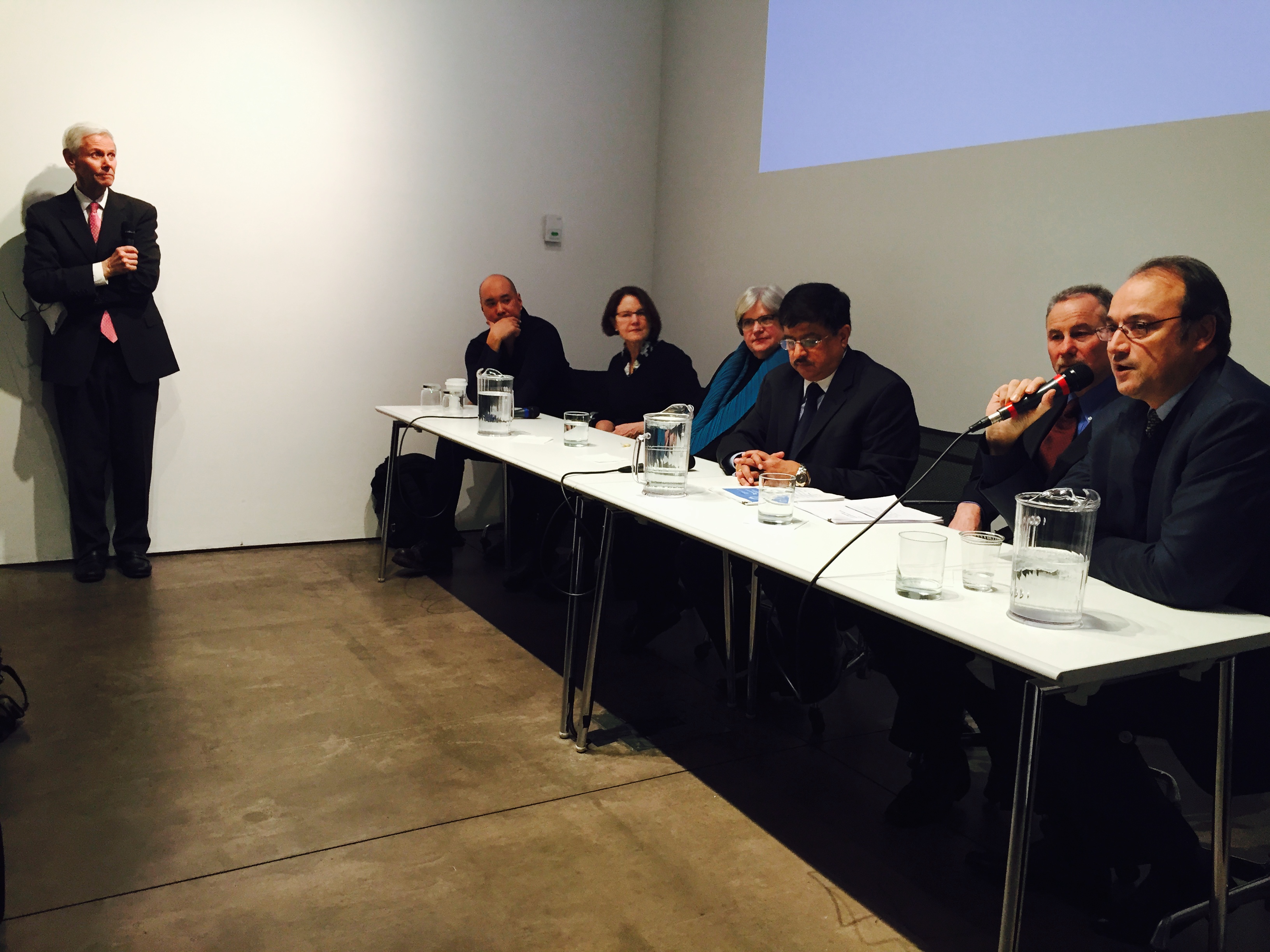by: Marvine Pierre Assoc. AIA
From transportation experts to engineers and architects, everyone was in attendance at this caucus held at the Center for Architecture to speak and learn about the behind-the-scenes construction of downtown’s newest transit hub, the Fulton Center. With a successful opening on 11.10.14, little did one know about the challenges the project surmounted in order to see its completion. Thankfully, Robert Eisenstat, AIA, and Vincent Chang, AIA, RIBA, of Grimshaw Architects; Sandra Bloodworth of MTA Arts & Design, Arup’s Craig Covil, and Urday Durg of the MTA were there to share the ups and downs they encountered while planning for the construction. They also offered exclusive insights about James Carpenter Design Associates’ Sky Reflector-Net installation.
How do you construct a new building around a continuously operating station? A structure traversed concomitantly by passengers, construction workers, and cranes alike? This was one of the largest challenges the MTA faced while planning for the project. Corvil explained how ramps and columns that once confined circulation were taken out to make more space in the station. The demolition happened above the platforms where commuters were catching their trains. Phasing the construction around rush hour was crucial to the building’s success. This way, 300,000 daily commuters could continue moving safely.
Sky Reflector-Net is an immense contribution to the new transit hub’s atrium space. The art installation is the collaborative work of Arup, Grimshaw, and James Carpenter Design Associates. The 36-meter-tall artwork captures the sky formations of everyday mornings, brings them down into the atrium space below, and into the arms of transit riders. A great way to start the day, in a bright space where one has the chance to experience art as it meets architecture in New York City.
Take the train to Fulton Street, and experience this new and improved transit hub for yourself.
Marvine Pierre, Assoc. AIA, is an architectural designer at Kohn Pedersen Fox, and a contributing writer to e-Oculus. She is also a member of the Emerging New York Architects (ENYA) Committee.
Event: Fulton Center… A Vision Realized
Location: Center for Architecture, 02.04.15
Moderator: William Wheeler, Director of Planning, MTA
Speakers: Robert Eisenstat, AIA, Chief Architect, Design Division, Vincent Chang, MA DipArch (Cantab), RIBA, AIA, Partner, Grimshaw Architects; Sandra Bloodworth, Director, MTA Arts & Design; Craig Covil, Principal and Infrastructure Leader, ARUP; Uday Durg, Fulton Project Executive, MTA Capital Construction Company
Organizers: AIANY Transportation and Infrastructure Committee









